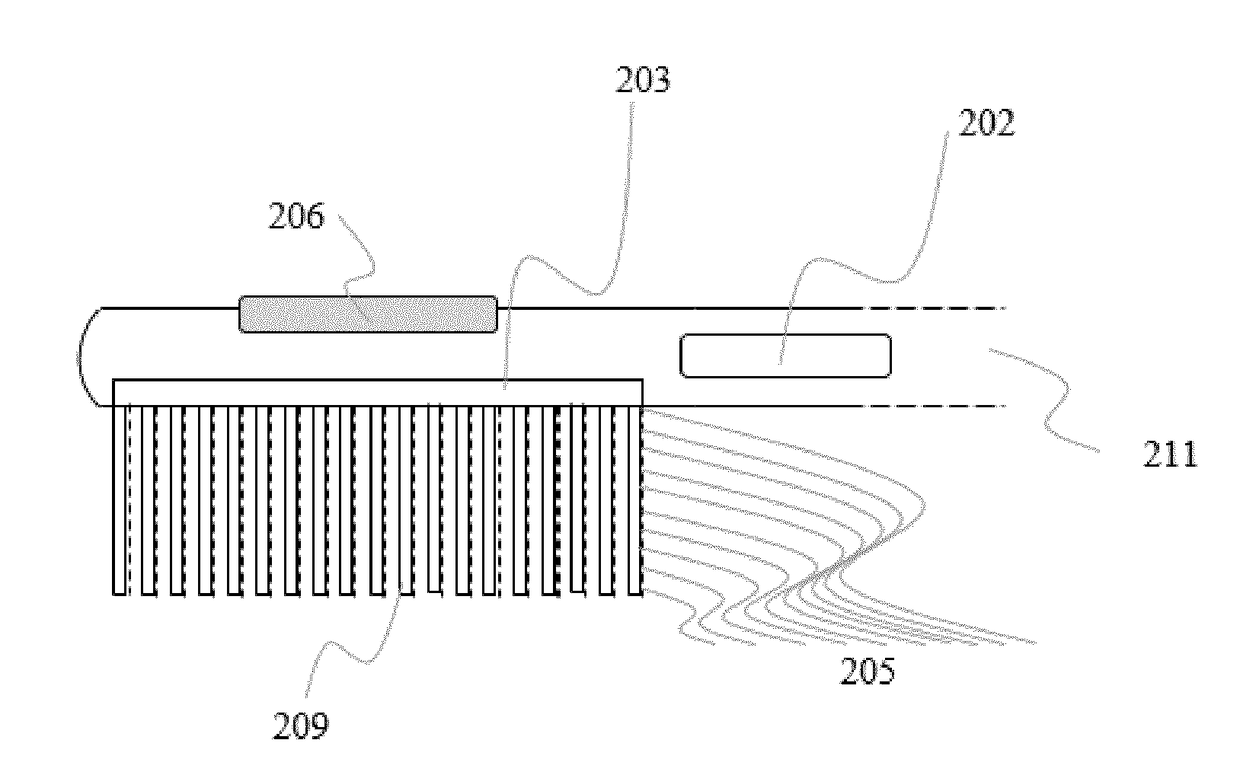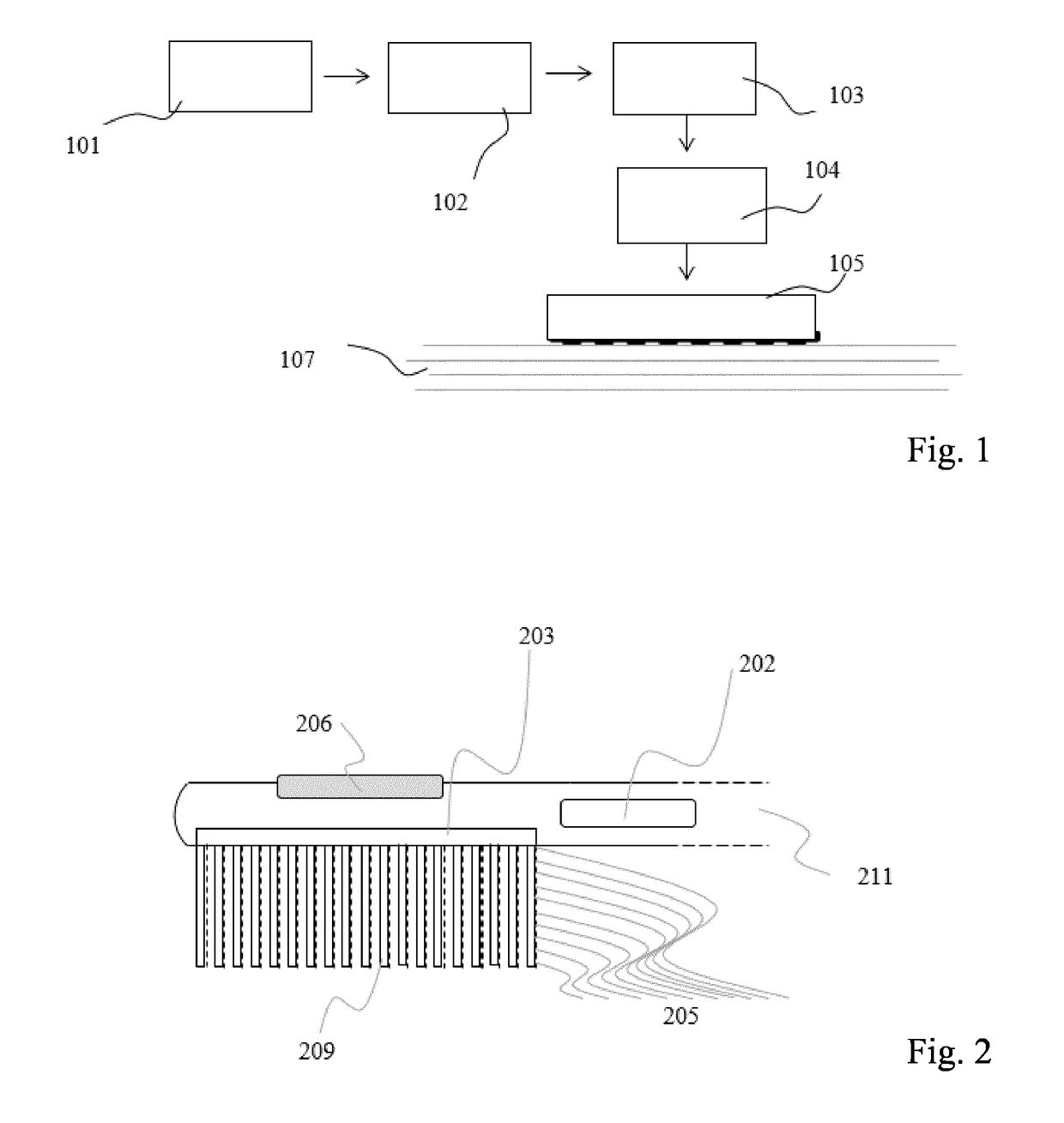Hair care device and method for enhancing uptake of a topical in hair
a hair care device and hair technology, applied in hair cleaning, hair equipment, combs, etc., can solve the problems of poor hair permeability for frequencies in the khz range up to 10 mhz, and increase the temperature per second, so as to enhance the safe and effective uptake of topicals, enhance the effect of topical uptake, and simple and low-cost solutions
- Summary
- Abstract
- Description
- Claims
- Application Information
AI Technical Summary
Benefits of technology
Problems solved by technology
Method used
Image
Examples
Embodiment Construction
[0016]Embodiments of the present invention provide a handheld, preferably cordless system which generates ultrasound to treat hairs coated by a topical for enhanced uptake of said topical. The ultrasound treatment is applied through direct contact with the topical covered hairs, preferably by clamping a tress of hair.
[0017]FIG. 1 shows an ultrasound generator 103 which generates fixed or variable low-voltage ultrasound pulses, with frequency, voltage and pulse duration controlled by a controller 102 depending on treatment settings selected through a user interface 101. An acoustic amplifier 104 achieves the required output acoustic intensity. An ultrasound transducer 105 projects the ultrasound into the topical that is applied on to the hair surface 107. A practical embodiment will further feature a topical delivery unit for applying the topical to the hair.
[0018]Piezoelectric crystals (PMUT) are used to produce ultrasound (>20 kHz). Non-piezoelectric techniques like Capacitive Micr...
PUM
 Login to View More
Login to View More Abstract
Description
Claims
Application Information
 Login to View More
Login to View More - R&D
- Intellectual Property
- Life Sciences
- Materials
- Tech Scout
- Unparalleled Data Quality
- Higher Quality Content
- 60% Fewer Hallucinations
Browse by: Latest US Patents, China's latest patents, Technical Efficacy Thesaurus, Application Domain, Technology Topic, Popular Technical Reports.
© 2025 PatSnap. All rights reserved.Legal|Privacy policy|Modern Slavery Act Transparency Statement|Sitemap|About US| Contact US: help@patsnap.com



